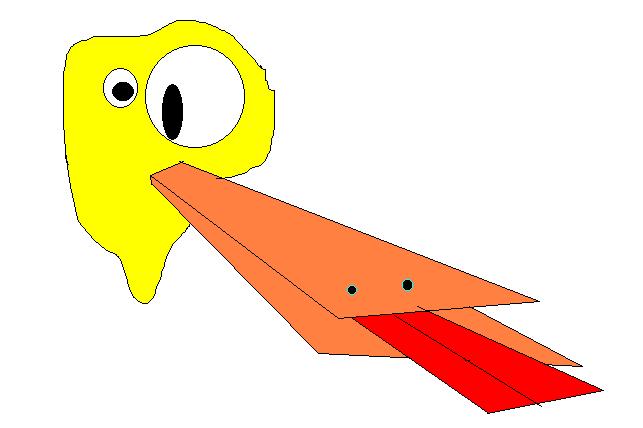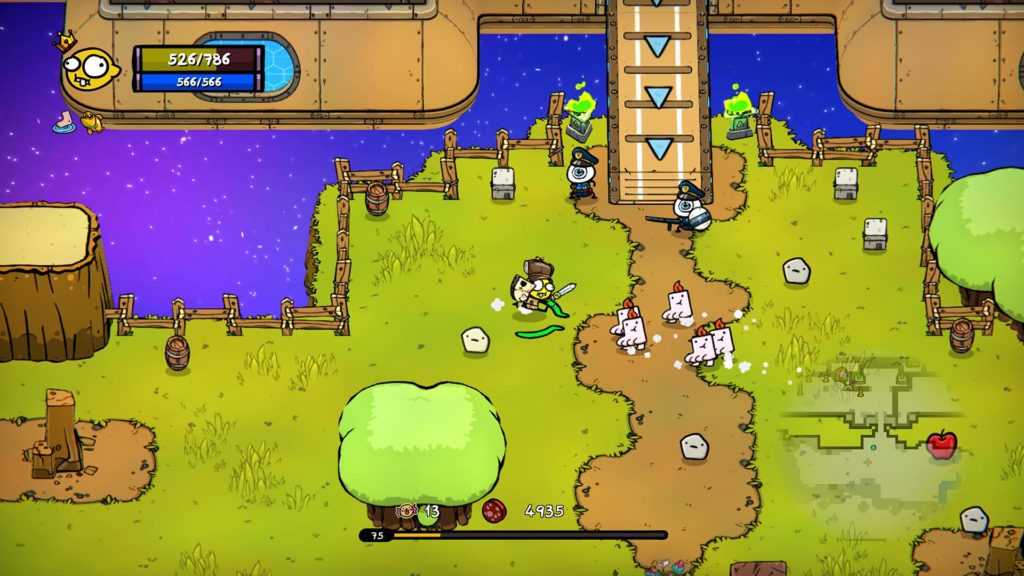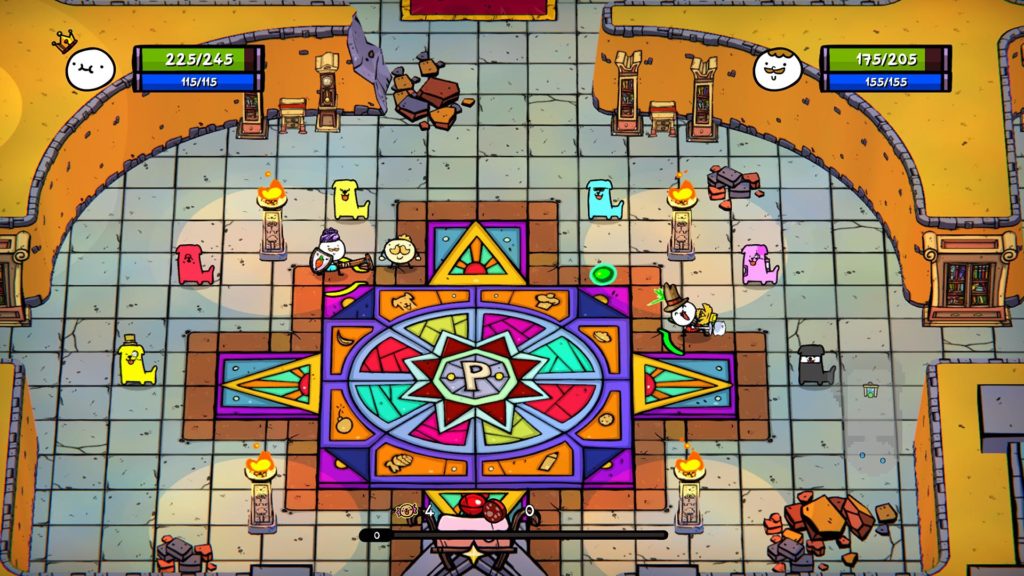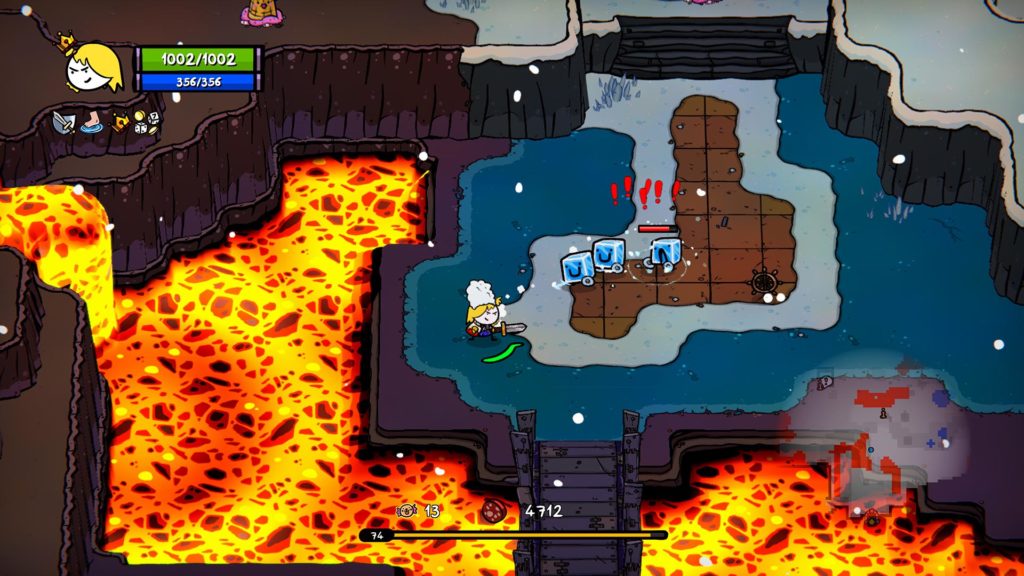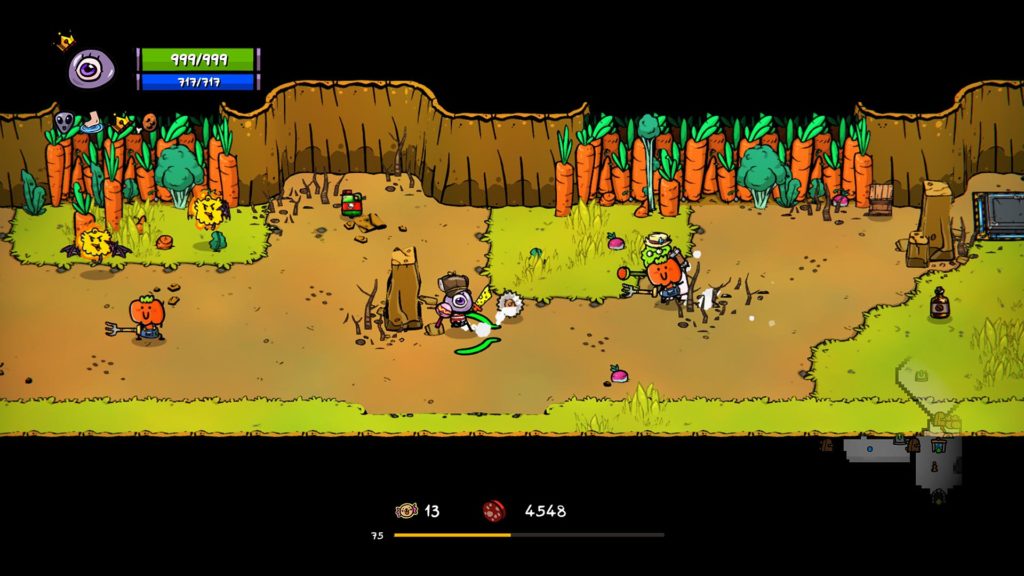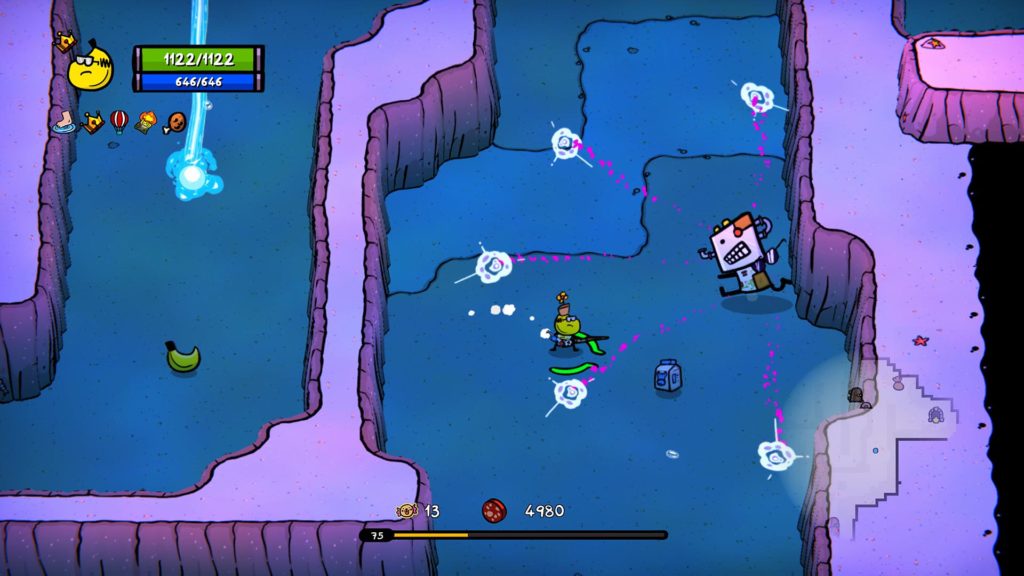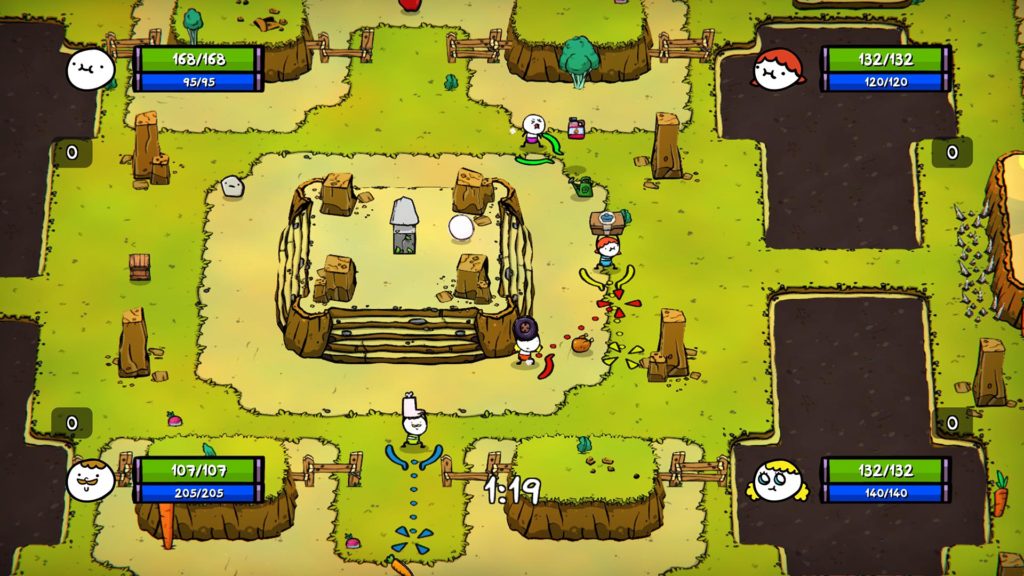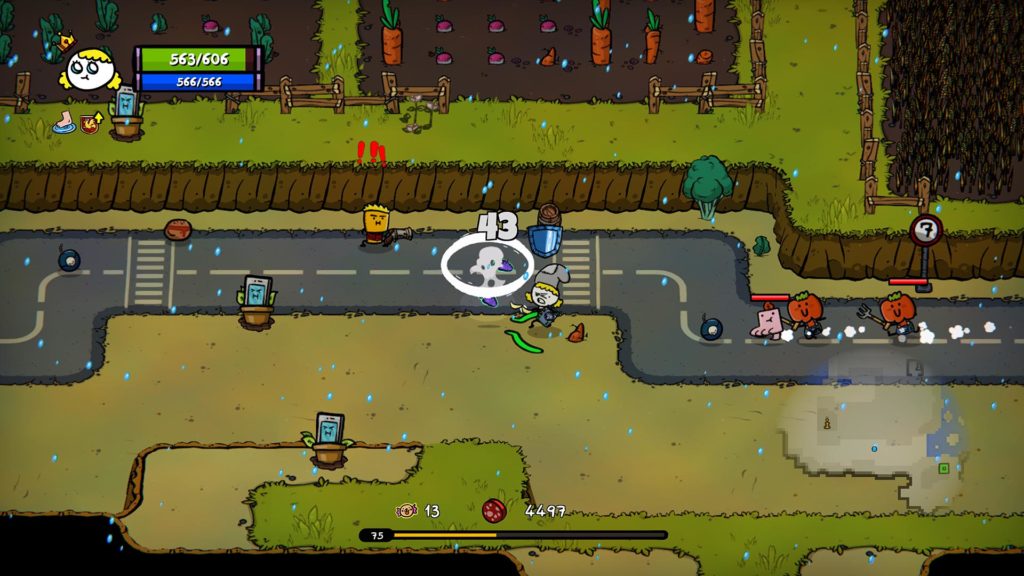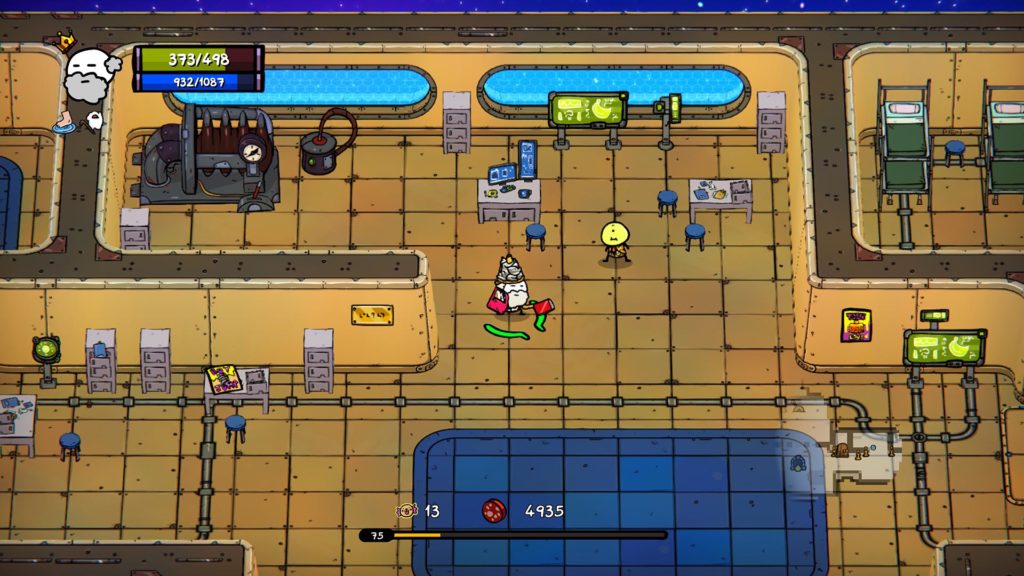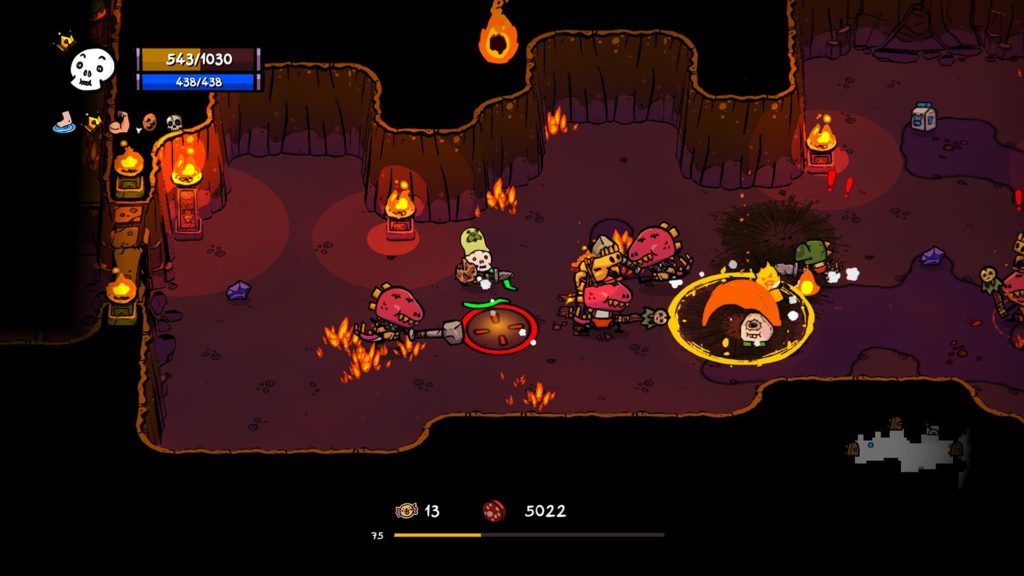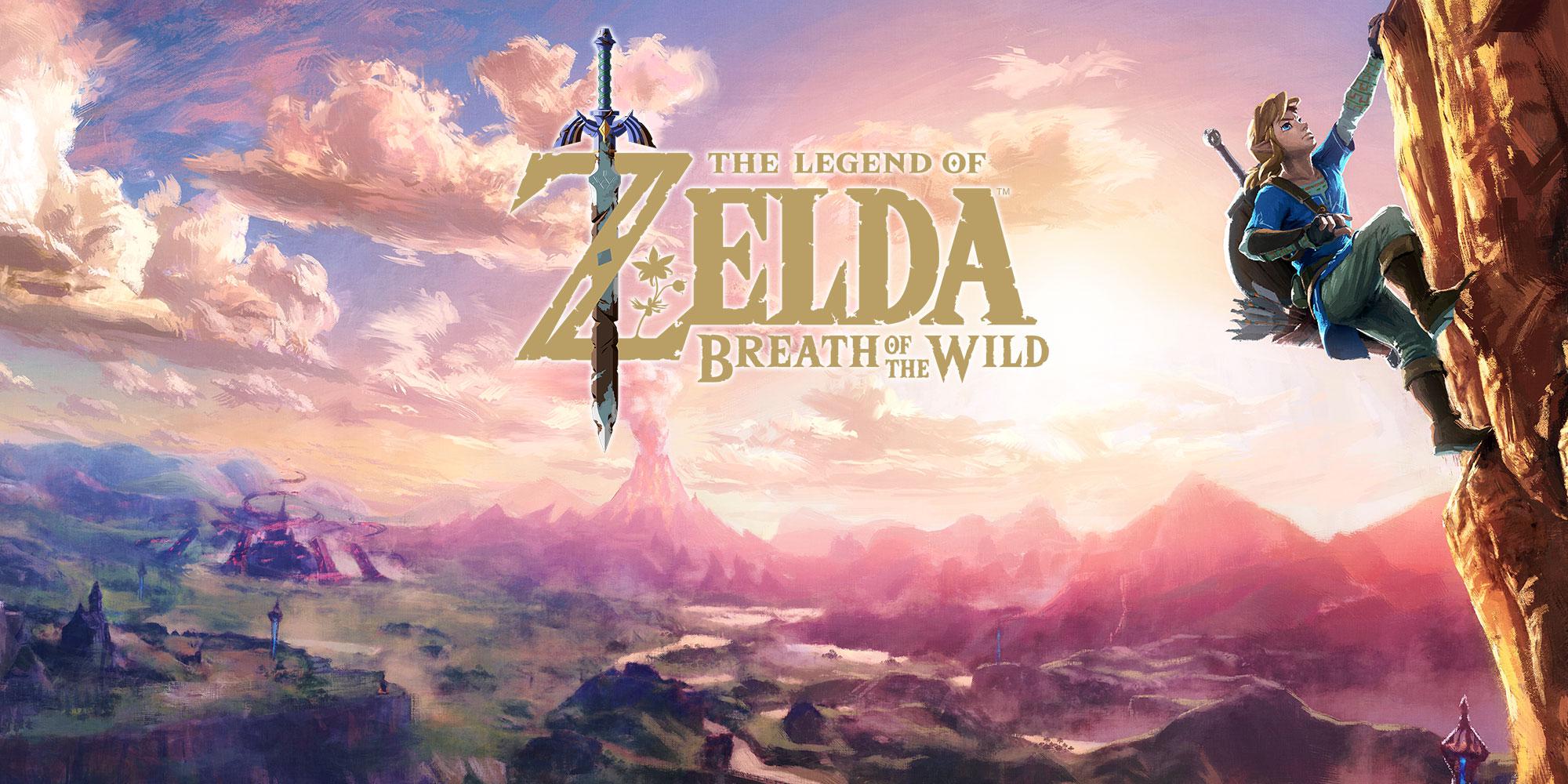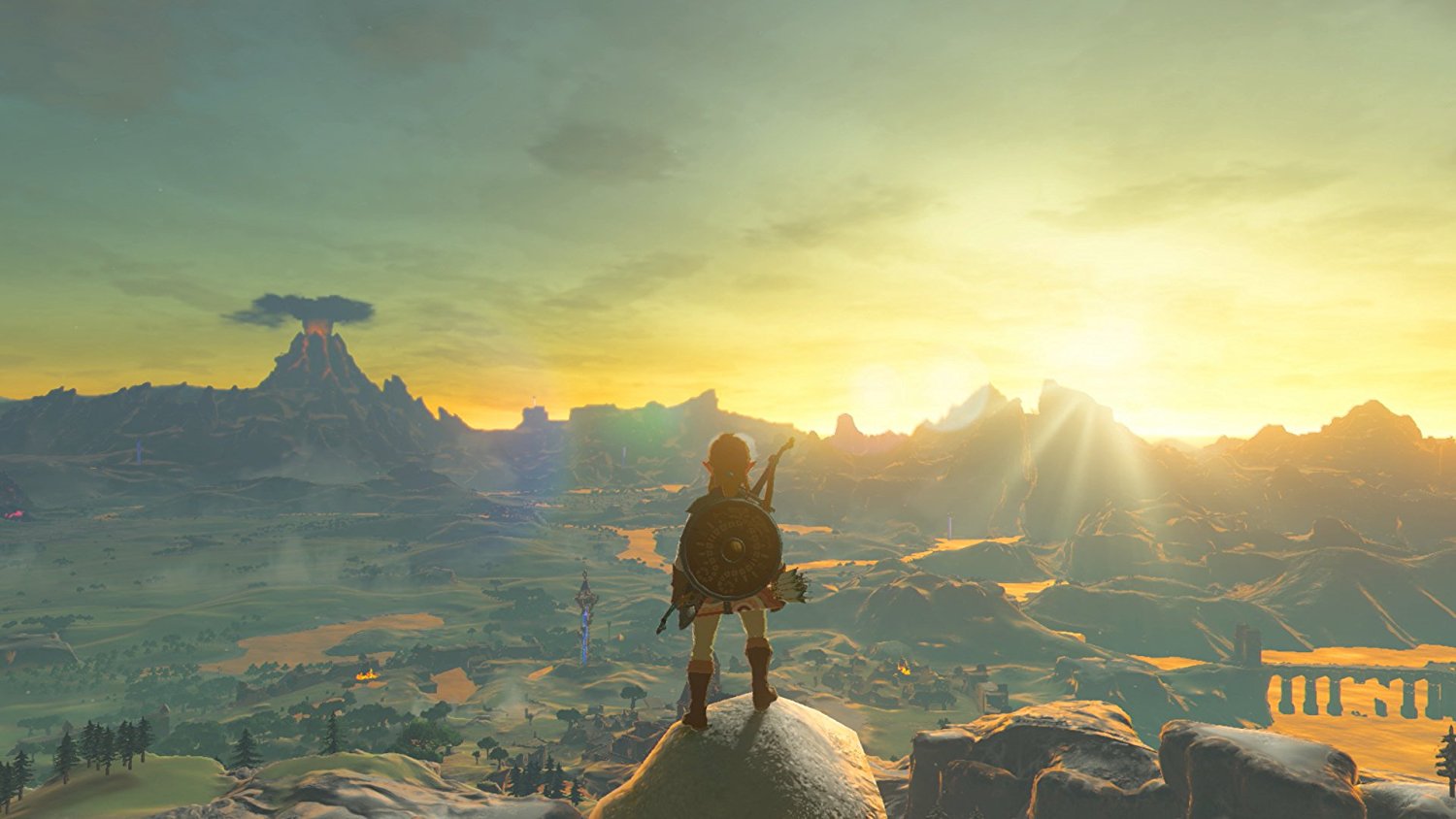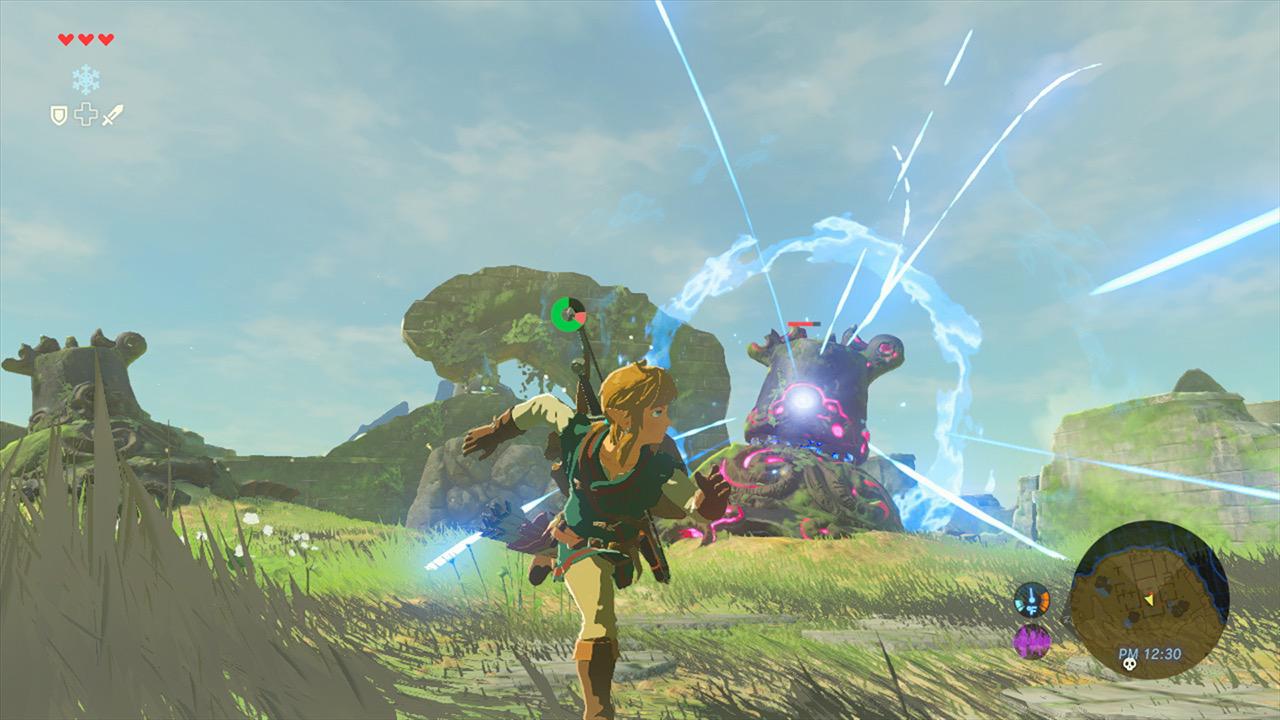Developer/Publisher: Thorium Entertainment || Overall: 9.5/10
Overview:
Undermine might seem like “yet another top down roguelike that resembles an old Zelda game,” but under the immediate aesthetic surface, you’ll find a wonderfully designed, fun, yet tough roguelike. The appeal of playing Undermine isn’t about messing around with a gimmick, but focusing solely on the strength of the genre with its gameplay and dungeon crawling.
You play as the endless queue of Peasants being sent to their doom by their king. The goal being to kill/loot/discover whatever it is in the Undermine. Each male and female you play as look exactly the same as the last; other than a pallet swap for clothing, a randomly assigned name, and different skin tones. The lack of individuality plays a role here as the Peasant will always die, and a new one will take their place.
While the story isn’t too complex, it keeps you guessing what the overall point of the whole endeavor is. You’ll discover/unlock upgrades and shops to help you get deeper into the Undermine, and progress the story bit by bit.
Graphics:
Undermine is a beautiful game. At first it was off-putting since I typically dislike “oversized” styles for characters, but I got used to it. While there isn’t a whole lot of customization to the player character (which is part of the dark humor in the game), they aren’t usually going to be alive long enough to matter before you are randomly assigned another Peasant.
There are a lot of unique enemies, only some being pallet-swapped versions of previous types. Effects are unique for each of the relics (power-ups) that you get, so it is easy to tell when something activates (which is also satisfying to see). Icons are also well done, so you recognize what each one is on sight rather than having to read it each time — though there are a lot of curses, blessings, and relics to remember so you’ll certainly have to check several times before recognizing repeats.
Sound:
Sound is great, everything has a good feel to it. The music is also good, but there’s only one track for each dungeon, I believe. I ended up muting the music and playing my own music after a while (a lot of DragonForce in particular, recently).
Gameplay:
The gameplay is actually not that unique from other roguelikes. What separates it is execution, which is practically perfect.
You don’t blast through the dungeons (a feeling I had with another roguelike, Moonlighter) due to the way the game is balanced. There are a lot of rooms with unique configurations; learning the rooms and enemies is a big part about preserving your health, which is hard to recover. You’ll die several times in the first dungeon before you get enough Gold to buy some permanent upgrades. Health recovery is possible, but food only heals a very low amount. I seldom ever get back to maximum health once I lose it; this is generally where a lot of the difficulty comes from since playing perfectly is emphasized as a result.
There are probably a hundred or more unique rooms, most of which are exclusive to their dungeon. New room configurations seem to pop up after a number of runs, perhaps due to a low chance of appearing, or maybe they unlock after a certain amount of time. Even after 30 hours, I still see new configurations in the first dungeon (known as the Gold Mine). When the room layouts are the same, enemy loadouts can still differ, so it keeps it fresh longer. A high percentage of rooms also have some sort of puzzle associated with them, sometimes not that obvious, so it’ll take experimenting over multiple runs to figure out what to do. Secret rooms are also fairly common, so being inquisitive often rewards you. You’ll use bombs and keys to solve the puzzles.
Progress ends up being slow and measured due to game design. This is a benefit because it doesn’t feel too easy and beating a boss or getting to the next dungeon feels like an earned experience. Once you discover a new dungeon you’ll be able to quick travel to it, bypassing the previous dungeon completely. However, it’s not the best decision to do so since you’ll lose out on all of the relics/items those floors have. You’ll get two relics for free for quick traveling, which is something they recently added to the build I was playing for this review — I found that it promotes quick travel as a more viable option. Before they added that in, I was traveling and completing the first floor of each dungeon before venturing deeper into the “progression” dungeon, but that strategy is painful by the time you hit the fourth dungeon.
Gold is the main currency of the game which can be used to purchase a number of upgrades at the entrance. A very important aspect to keeping the game high paced, is that after clearing a room, you’ll open chests or mine gold. The game doesn’t let you off that easy since there is an enemy called a Pilfer which will actually steal any gold that drops on the ground. They will keep spawning until the gold is gone, so you’ll have to run around and pick everything up or you lose out on it. This keeps the game high-paced and not always combat-focused.
Additionally, when you die, you’ll lose about 25% of your total gold (before upgrades). The loss of gold makes it more effective to purchase upgrades while you’re in the mine instead of just saving everything up for upgrades. Think of it as buying insurance before the taxes kick in on your pay check. If you repeatedly die without upgrading or buying things, you waste the opportunity of getting that much further in your next run.
A secondary currency called Thorium can be found, but is much rarer. This currency is used exclusively to craft new relics or potions, which can be used in your next run and is added to the loot pool from then on. The only time a relic can be guaranteed is when you craft it initially; if you craft more than one you’ll actually lose the additional relics to a Pilfer, so you’ll only be able to use one crafted relic per run — same goes for Potions. You are only able to craft them one time, at which point they become a “normal” relic/potion in the dungeon waiting to be found.
Crappiest Part:
It is hard to pick something that is crappy, but probably the lack of gameplay customization or different classes. While it is certainly not NEEDED, it would be nice to be able to modify your initial loadout just a bit so that gameplay can differ right off the bat and not always rely on a “luck of the draw.”
Not all relics are playstyle changers, so it isn’t guaranteed you’ll get to play differently anyway. Eventually, you unlock a shop upgrade that allows for Relics to be bought, but I have yet to see one pop up at the vendor. Not sure if this is a bug or not.
Conclusion:
9.5 is high praise for a game, and while it isn’t perfect, it is damn near it. My only gripe is probably the lack of agency in customizing runs reliably. Undermine is a genuinely fun title that deserves praise and fans of the genre should be very pleased. The benefit of being in Early Access for so long seems to have looked favorably upon Thorium’s development of this title.

